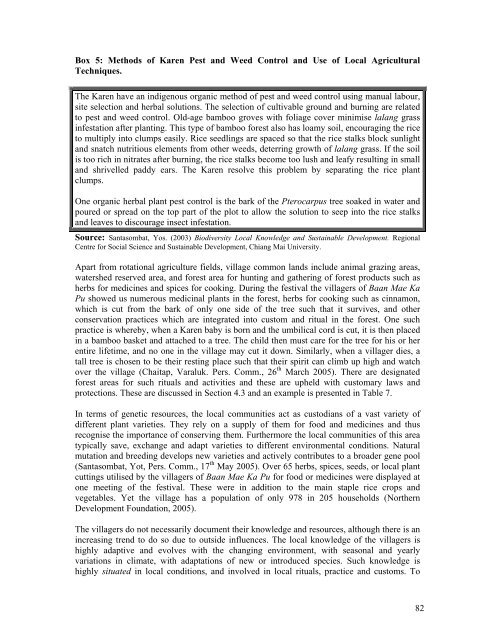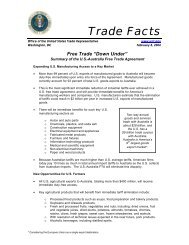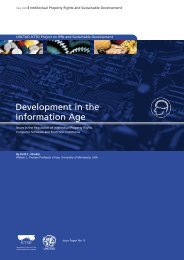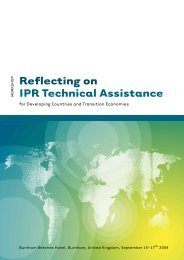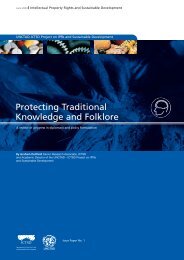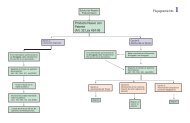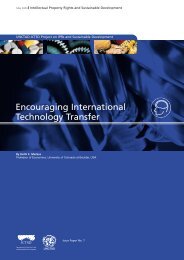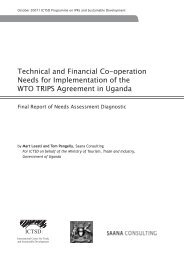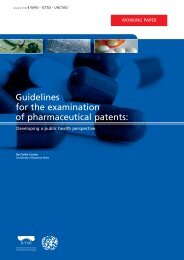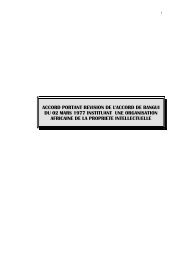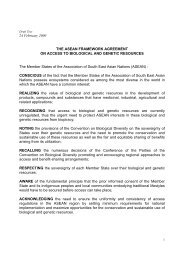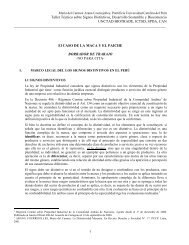Governance and Micropolitics of Traditional ... - IPRsonline.org
Governance and Micropolitics of Traditional ... - IPRsonline.org
Governance and Micropolitics of Traditional ... - IPRsonline.org
You also want an ePaper? Increase the reach of your titles
YUMPU automatically turns print PDFs into web optimized ePapers that Google loves.
Box 5: Methods <strong>of</strong> Karen Pest <strong>and</strong> Weed Control <strong>and</strong> Use <strong>of</strong> Local Agricultural<br />
Techniques.<br />
The Karen have an indigenous <strong>org</strong>anic method <strong>of</strong> pest <strong>and</strong> weed control using manual labour,<br />
site selection <strong>and</strong> herbal solutions. The selection <strong>of</strong> cultivable ground <strong>and</strong> burning are related<br />
to pest <strong>and</strong> weed control. Old-age bamboo groves with foliage cover minimise lalang grass<br />
infestation after planting. This type <strong>of</strong> bamboo forest also has loamy soil, encouraging the rice<br />
to multiply into clumps easily. Rice seedlings are spaced so that the rice stalks block sunlight<br />
<strong>and</strong> snatch nutritious elements from other weeds, deterring growth <strong>of</strong> lalang grass. If the soil<br />
is too rich in nitrates after burning, the rice stalks become too lush <strong>and</strong> leafy resulting in small<br />
<strong>and</strong> shrivelled paddy ears. The Karen resolve this problem by separating the rice plant<br />
clumps.<br />
One <strong>org</strong>anic herbal plant pest control is the bark <strong>of</strong> the Pterocarpus tree soaked in water <strong>and</strong><br />
poured or spread on the top part <strong>of</strong> the plot to allow the solution to seep into the rice stalks<br />
<strong>and</strong> leaves to discourage insect infestation.<br />
Source: Santasombat, Yos. (2003) Biodiversity Local Knowledge <strong>and</strong> Sustainable Development. Regional<br />
Centre for Social Science <strong>and</strong> Sustainable Development, Chiang Mai University.<br />
Apart from rotational agriculture fields, village common l<strong>and</strong>s include animal grazing areas,<br />
watershed reserved area, <strong>and</strong> forest area for hunting <strong>and</strong> gathering <strong>of</strong> forest products such as<br />
herbs for medicines <strong>and</strong> spices for cooking. During the festival the villagers <strong>of</strong> Baan Mae Ka<br />
Pu showed us numerous medicinal plants in the forest, herbs for cooking such as cinnamon,<br />
which is cut from the bark <strong>of</strong> only one side <strong>of</strong> the tree such that it survives, <strong>and</strong> other<br />
conservation practices which are integrated into custom <strong>and</strong> ritual in the forest. One such<br />
practice is whereby, when a Karen baby is born <strong>and</strong> the umbilical cord is cut, it is then placed<br />
in a bamboo basket <strong>and</strong> attached to a tree. The child then must care for the tree for his or her<br />
entire lifetime, <strong>and</strong> no one in the village may cut it down. Similarly, when a villager dies, a<br />
tall tree is chosen to be their resting place such that their spirit can climb up high <strong>and</strong> watch<br />
over the village (Chaitap, Varaluk. Pers. Comm., 26 th March 2005). There are designated<br />
forest areas for such rituals <strong>and</strong> activities <strong>and</strong> these are upheld with customary laws <strong>and</strong><br />
protections. These are discussed in Section 4.3 <strong>and</strong> an example is presented in Table 7.<br />
In terms <strong>of</strong> genetic resources, the local communities act as custodians <strong>of</strong> a vast variety <strong>of</strong><br />
different plant varieties. They rely on a supply <strong>of</strong> them for food <strong>and</strong> medicines <strong>and</strong> thus<br />
recognise the importance <strong>of</strong> conserving them. Furthermore the local communities <strong>of</strong> this area<br />
typically save, exchange <strong>and</strong> adapt varieties to different environmental conditions. Natural<br />
mutation <strong>and</strong> breeding develops new varieties <strong>and</strong> actively contributes to a broader gene pool<br />
(Santasombat, Yot, Pers. Comm., 17 th May 2005). Over 65 herbs, spices, seeds, or local plant<br />
cuttings utilised by the villagers <strong>of</strong> Baan Mae Ka Pu for food or medicines were displayed at<br />
one meeting <strong>of</strong> the festival. These were in addition to the main staple rice crops <strong>and</strong><br />
vegetables. Yet the village has a population <strong>of</strong> only 978 in 205 households (Northern<br />
Development Foundation, 2005).<br />
The villagers do not necessarily document their knowledge <strong>and</strong> resources, although there is an<br />
increasing trend to do so due to outside influences. The local knowledge <strong>of</strong> the villagers is<br />
highly adaptive <strong>and</strong> evolves with the changing environment, with seasonal <strong>and</strong> yearly<br />
variations in climate, with adaptations <strong>of</strong> new or introduced species. Such knowledge is<br />
highly situated in local conditions, <strong>and</strong> involved in local rituals, practice <strong>and</strong> customs. To<br />
82


